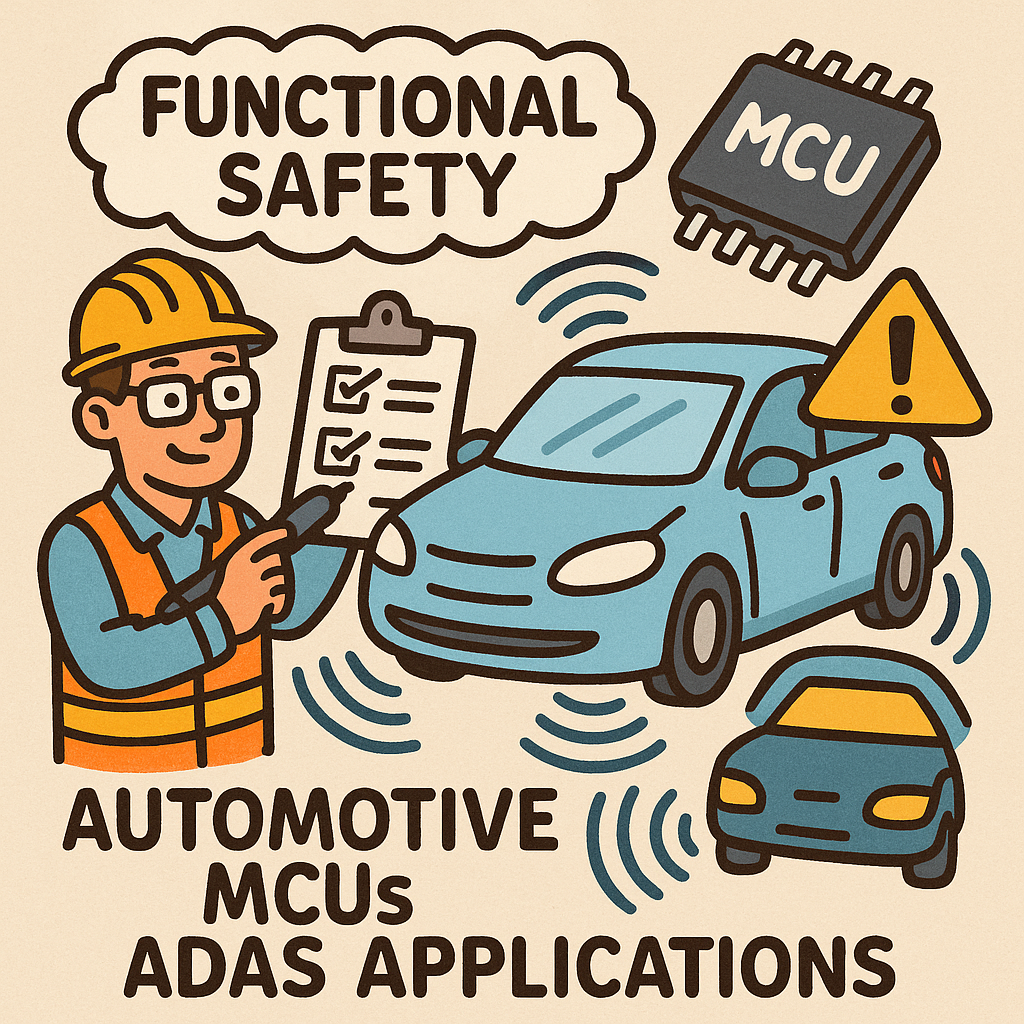Implementing Functional Safety Standards (ISO 26262) in Automotive MCUs for Advanced Driver Assistance Systems (ADAS)
The automotive industry is experiencing a seismic shift. With the rapid advancement of technologies, especially in the realm of Advanced Driver Assistance Systems (ADAS), the need for robust functional safety standards has never been more critical. Enter ISO 26262, a standard that serves as the backbone for ensuring safety in automotive electronics. As we delve into the complexities of implementing ISO 26262 in automotive microcontrollers (MCUs), it’s essential to consider not only the technical aspects but also the broader implications for engineers, manufacturers, and consumers alike.
The Importance of Functional Safety in ADAS
Imagine navigating a bustling city street with an array of vehicles, pedestrians, and cyclists. In such an environment, the reliability of your vehicle’s ADAS is paramount. These systems, which include features such as adaptive cruise control, lane-keeping assistance, and automatic braking, must operate flawlessly to prevent accidents. This is where functional safety comes into play. ISO 26262 specifically addresses the automotive safety lifecycle, guiding engineers through the development process to mitigate risks associated with system failures.
Understanding ISO 26262: A Roadmap for Safety
ISO 26262 is not just a checkbox on a compliance list; it is a comprehensive framework that necessitates a cultural shift within organizations. The standard is divided into several parts, each focusing on different aspects of automotive safety:
- Part 1: Vocabulary and definitions.
- Part 2: Management of functional safety.
- Part 3: Concept phase, including hazard analysis and risk assessment.
- Part 4: Product development at the system level.
- Part 5: Product development at the hardware level.
- Part 6: Product development at the software level.
- Part 7: Production and operational safety.
- Part 8: Supporting processes.
This structured approach ensures that every phase of the product lifecycle, from conception through production to decommissioning, is scrutinized for safety risks. Adopting this standard is not merely about compliance; it’s about fostering a mindset where safety is integral to design and development.
Challenges in Implementing ISO 26262
Implementing ISO 26262 can feel like navigating a labyrinth. The challenges are numerous, especially for those new to the standard:
- Resource Allocation: Adhering to ISO 26262 requires significant investment in both time and resources. Companies must ensure that their teams are well-trained and equipped to tackle the rigors of the standard.
- Complexity of Systems: Modern ADAS often combines multiple sensors, software algorithms, and hardware components, making it crucial to manage the interplay between these elements effectively.
- Documentation and Traceability: The standard demands thorough documentation and traceability, which can be daunting. Engineers must maintain meticulous records at every step to demonstrate compliance.
Despite these hurdles, the benefits of adhering to ISO 26262 far outweigh the challenges. Organizations that invest in functional safety not only protect their consumers but also enhance their reputation and marketability.
Best Practices for Integration of ISO 26262 in Automotive MCUs
When it comes to integrating ISO 26262 into automotive MCUs for ADAS applications, several best practices can streamline the process:
- Early Involvement of Safety Experts: Engage safety experts from the onset of the project. Their insights can help identify potential hazards during the concept phase.
- Cross-Disciplinary Collaboration: Foster collaboration between hardware and software teams. An integrated approach can streamline the development process and ensure that safety considerations are addressed holistically.
- Use of Safety Mechanisms: Implement safety mechanisms, such as redundancy and fail-safes, within the MCU design to enhance reliability.
- Continuous Testing and Validation: Adopt a rigorous testing regime that adheres to the safety requirements outlined in ISO 26262. Continuous validation helps catch issues early in the development cycle.
The Future of ADAS and ISO 26262
As we look to the future, the integration of emerging technologies, such as AI and machine learning, into ADAS will undoubtedly complicate the landscape of functional safety. Microcontrollers are evolving rapidly, with trends leaning towards RISC-V architectures and AI accelerators that promise enhanced performance. However, the foundational principles set forth by ISO 26262 remain relevant. They will need to adapt, but the core tenets of safety will always be crucial.
In the grand scheme, the automotive industry is on a path to increased automation and connectivity. With this shift comes the responsibility of ensuring that safety is never compromised. Implementing ISO 26262 in automotive MCUs for ADAS applications is not just a regulatory requirement; it is a commitment to the safety of everyone on the road.
As engineers, we must embrace this challenge, leveraging our skills to create systems that not only meet safety standards but also enhance the driving experience. The future of automotive technology is bright, and it’s up to us to steer it in the right direction.



